Dear community,
This month’s podcast episode features Amy Brinkley’s incredible journey — she uses her personal experiences with substance use and mental illness recovery to drive change and support others to sustain recovery, especially after incarceration.
💫 Spread the light with Dr Devika B. First-person accounts of living with mental illness that dispel stigma and stereotypes and instead, spread hope and light — also a YouTube channel and podcast on Apple; Spotify
Because stigma festers in the dark and scatters in the light
Here’s more about Amy:
Amy Brinkley is a nationally recognized leader in mental health and substance use recovery. Motivated by personal recovery experience and the suicides of three brothers and her mother’s overdose, Amy is dedicated to driving change through effective peer support and recovery-oriented systems of care.
Amy serves as the Recovery Support Services Coordinator for the National Association of State Mental Health Program Directors, and also serves (with me) on the national Board of Directors for the National Alliance on Mental Illness (NAMI). She founded Paul’s Plan Ministries, which supports people exiting the criminal justice system, named in honor of her brother.
Amy lives in recovery with opioid use disorder (14.5 years sober), depression, anxiety, and post-traumatic stress disorder. She is mother to four children, three cats, and a cherished Labradoodle named Ruby.
Trigger warning: In this interview, we talk about substance use, depression, post-traumatic stress disorder, suicidal ideation and attempts, loss to suicide, and incarceration.
Above, you’ll find the audio recording of the podcast episode and below, a transcript. The written version of the conversation has been lightly edited for clarity and length.
If you’d prefer to watch this conversation, please click here. Here’s a brief video clip:
Click here to catch up on other Spread the light columns, in addition to other posts organized by column type, going back to our newsletter’s launch in January 2023.
If you or a loved one needs help for a mental health crisis, don’t hesitate to call or text 988 — or reach them online here. Find other resources here, search for a US treatment facility here, and find a US-based therapist here.
Wishing you light,
Dr Devika Bhushan
DB: Welcome to the show, Amy. I know there’s a lot for us to talk about today. Could you start by giving folks a sense of the broad brushstrokes of your mental health journey?
AB: So my mental health journey started when I was a kid. I grew up with four brothers and my father was alcoholic; my Mom was co-dependent.
Now, my brothers, all three were diagnosed with ADHD at a very young age. And I did not have a diagnosis. And I’ve often thought about this, just reflecting back on my childhood: I did not have a diagnosis; I was not on any meds.
But my first suicide attempt was when I was 15. And I was [eventually] diagnosed with PTSD [post-traumatic stress disorder], anxiety, and severe depression.
In hindsight, I can look back on my life and see the cycles: every few years I seem to have a meltdown and fall apart. And I couldn’t really understand what this cycle was, where it was coming from, or why I experienced it.
And I’ve picked up — in more recent years, with wisdom and age — that it had to do with stigma. Whenever I started feeling better, I stopped taking the medicine. It was this internal stigma against just being on medications.
DB: Yeah, absolutely. That self-stigma around being somebody who has a mental illness, who needs medications — it can be so difficult to internalize and it get in the way of our own recovery. How did you then get to a place where you were able to be on a path of recovery?
AB: For me, my saving grace was actually a substance use disorder. Unfortunately, I was incarcerated. I was sentenced to 14 years in the Indiana Department of Corrections in 2009, having never been arrested before — on an opioid-related charge.
I got an opioid use disorder from a shoulder surgery, where I was in physical therapy for about a year and got addicted to the pain medicine and that led to incarceration.
And it was actually while I was incarcerated that I had my first real spiritual experience and it led me into my recovery.
I detoxed in the county jail. And was plugged into a therapeutic program with the prison, which helped me. It was a two-part path: one was character-based and [the other was] the spiritual side of the house.
And so I got acclimated to the 12-step program for substance use. And I was also involved in a therapeutic community, where I got some peer support. I also got my spiritual needs met while I was there. It really felt like a holistic approach. That was my first real, authentic glimpse into recovery.
And I had to really just face myself, and face my own stigmas. Because I had all my own stuff. I grew up in a dysfunctional family and I knew from a very young age I didn’t want to be anything like my parents or my family.
I carried this stigma with me, that, you know — they’re like that and they get what they deserve. And if they would just stop using drugs or they’d start making better choices, their lives wouldn’t be that way. I was very judgmental.
Then, you know, pain pills led me down that same path, and I realized that it wasn’t a morality thing; it wasn’t a choice I could just make to just stop. It wasn’t that simple.
And then learning how to apply the 12 steps and spiritual principles to my life led me into recovery, but I really had to face down my own stigma.
DB: That is so poignant and so powerful — the journey you went through around your own stigma, your relationship to your family, and in the end, your relationship to yourself. What did it take for that self-stigma to dissolve?
AB: That’s such a deep question. And I don’t even know if I could say that it’s fully dissolved. I still struggle with it in certain areas in different ways, to varying degrees.
Childhood stuff, like, creeps up just when you think you’re done with it. It’s like, ‘Oh, wait, where did that thought come from? Or why am I doing it this way?’
And then, you know, you have all of this internal bias that comes up, and you’re not expecting it.
For me, the dissolution of the majority of the stigma came when I wrote my book.
It started when my brother took his life. I had all this anger welling up in me and I’m like, ‘I have to do something.’
And then God gave me this vision: ‘You need to go talk to people.’
So then I went and I was like, ‘I need to talk to your people.’ And they’re like, ‘Okay, you can come speak tomorrow.’ And I’m like, ‘Oh God, no!’ Then the next day, in my world, I faced down my biggest fear — public speaking.
I stood in front of a room full of 70 women in a therapeutic program and I shared my story. And it was very brief because I was so emotional.
And for me, that was a dissolution of that stigma because I had been literally holding on to [it], even three years into my recovery and three years into my programming at the facility.
I had been holding on to this idea that I am not going to share my story when I get out of here. I just wanted to put this behind me and move on with my life and get my family back and get everything back in line.
And that just exploded when my brother died. That whole idea of just forgetting that this ever happened was just shattered.
And then it was from that moment forward, too, that I was like, ‘Okay, you know what? I’m going to write a book. I’m going to tell my side of the story, my version of events that happened and what led me to incarceration… And then I’m never going to talk about it again. I’m not going to have to keep telling my story. I’ll give God all the glory and then I’ll be done with it.’
That’s, of course, not what happened. But by virtue of writing it, and the even bigger step of actually publishing it, was where the majority of that dissolution of stigma happened because there was no more hiding. It was public domain after that.
DB: So powerful. And can you tell listeners who may not be familiar with the 12-step program and with peer support, what those experiences look like and more about the role they played for you?
AB: So my first introduction to a 12-step program was in the Rockville Correctional Facility in the state of Indiana. The 12 steps originated out of Alcoholics Anonymous. Dr. Bob [Smith] and Bill Wilson created the Alcoholics Anonymous 12-step program, which has subsequently led millions of people into abstinence-based recovery from substance use. And that has spun off into Narcotics Anonymous and Cocaine Anonymous and all of the other Anonymous-es that come with it.
I had never been to a 12-step meeting or knew much about it other than what you see in the movies, which is people sitting around a table and saying, ‘Hi, my name’s so and so and I’m an alcoholic.’
I didn’t have any experience with that until I got to the prison setting. And I got into this program and that was essentially peer support.
It was hearing from other people, their stories, relating to their stories, to the lived experiences, and then finding hope. If they can overcome what they overcame, if they can go through what they’re going through, if we can have these same experiences and these same emotions, and these same life circumstances — and they’re staying sober — then I can, too.
That, to me, is the epitome of peer support.
In the behavioral health space, we have peer-specific roles. A peer support provider is oftentimes a certified, trained person with direct lived experience of mental health and/or substance use recovery. And so states certify peers and then peers work within mental health centers.
And we now have peer-run organizations that hire peers and peers [also] provide non-clinical support to people in the community.
DB: On that note, can you tell us a bit about your non-profit, Paul’s Plan Ministries?
I would love to talk about Paul’s Plan.
So I have lost three brothers to suicide, my Mom to an overdose.
My second brother: we were actually incarcerated at the same time on drug-related charges. And I was still incarcerated when he was released and five days post-his release, he took his life.
At that time, I was three years into my own recovery journey from substance use and mental health. And I was devastated. It was a huge setback for me and my faith and my spiritual walk in my recovery journey.
It was a lot to process. I was leveled. I felt like I was doing really good for a while, and then that was a debilitating blow.
And during the grieving process, I had a vision of helping people. I’m just going to be very transparent because this was my lived experience: I had a vision from God.
And I believe that He showed me that I was going to be helping people and that my brother’s death did not happen for nothing.
And here’s stigma at its finest: I had argued with God for two years that I would do anything post-release to help God in the kingdom, but I would not share my story because I thought, ‘Okay, I’m going to get to the other side of this. I’m going to get out of prison. I’m going to put all this behind me. And then I never want to talk about it again.’
Stigma at its finest. And God said, ‘We’re going to use this and we’re going to leverage it, and we’re going to help people.’
And from that moment forward, it was like I just had this new set of eyes — advocate eyes.
And so everywhere I looked was my brother, and everywhere I looked was my sister. And everywhere I looked: all of these people with the same problems and the same barriers and the same stigmas and the same systems holding them down as my entire family.
And I was angry. But that anger turned into advocacy and I just wanted to bring change.
And so Paul’s Plan is built out of that advocate’s heart and those advocate eyes.
It’s a peer-run, faith-based non-profit organization that we started in March of last year [2022] and we are focusing on people coming out of the criminal justice system with mental health and/or substance use disorders.
So our goal is — as in its name, Paul’s Plan — to help people re-enter successfully. And the best way to do that is to plan for their re-entry. Ideally, we would do in-reach. We’ve not made entrance into the jail yet, but we are on-site at Work Release and we’re partnering with our state-level Department of Corrections and our local community Corrections Offices to work with people coming out of the criminal justice system to re-enter successfully.
Part of that comes with addressing social determinants of recovery. When people come out, they can’t access housing. They can’t get their birth certificates. They need help getting their IDs. They need help getting to a place to find a job, let alone getting a job. They need shoes.
And oftentimes they don’t have the support system. So that’s our goal: to support people coming out of the criminal justice system.
DB: That is huge. And how many folks have benefited already from the program?
AB: We got two Department of Health grants for $75,000 each year, and we’re six months into the second grant and we’ve doubled our outreach.
Since we’ve opened since March of last year, more than 300 people have been served either through housing supports, clothing supports, food supports, emergency bill support, transportation support, bus passes, bikes — you name it.
I just helped somebody actually this afternoon, right before this call. Her gas was going to be shut off and it’s 20 degrees in Indiana today. And she’s got young children; she’s got 6 years in recovery; and she’s leading this whole government phone initiative for the state.
She’s doing all these things and she’s a person in recovery and like, we all need help. And she’s come out of the criminal justice system, too.
So we are trying to stay in our lane. The fact of the matter is that successful transition is important, but ongoing support is equally important to help prevent setbacks.
DB: We all need support. What you’re doing with Paul’s Plan is just so incredible.
AB: Thank you. Our goal is really just to love people and to provide support for people impacted by the criminal justice system.
Dr. Gupta, the Office of National Drug Control Policy Director, just shared recently, in DC at the National Recovery Month event, as well as at Purdue in my local hometown: 27,000 overdosed upon re-entry to the community from the criminal justice system.
We’ve just got to do better.
People are being incarcerated, but the majority of people being incarcerated are going to re-enter the community. And the fact of the matter is that the community supports are not ready to receive them, more often than not.
And we have all of these systems and structures designed to actually not be supportive.
DB: Right. They keep people down, keep them from finding meaningful recovery services, jobs, housing — all of it.
AB: Yeah, absolutely. So that’s what we’re trying to do.
I worked on a toolkit this past year on best practices for hiring peers with felony backgrounds.
And SAMHSA released a behavioral health workforce report in 2021 that declared that we have a shortage of 1 million certified peers to meet the existing need. This is two years ago. And we all know that the crisis has grown since then.
We have millions of people coming out of the criminal justice system. But 60 percent of them are still unemployed one year post-incarceration. We’ve just got to do better because [most] people want to come back.
Some people make honest mistakes. And I think if we all had everything we’d ever done in our entire lives on a screen for the world to see, we might all have a criminal justice background.
But all of that aside, a lot of people do want to do better. They just don’t have the proper supports or people to show them the way.
DB: Absolutely. Amy, as you’re looking back at your whole journey up until this point, if you could look back and talk to yourself in the hardest part of that journey, what would you tell yourself, knowing everything that you know now?
AB: That’s a heavy question. As cliched as it sounds, I would just tell myself to hang on, to keep fighting, to be encouraged.
Did it all happen for a reason? I feel like, you know, I tried to stand on those promises. It’s easier said than done because the emotions are still there, especially in the heat of loss.
One of the most devastating moments was when I was incarcerated away from family, as hopeless and as powerless as possible. And my brother died.
And I’d been praying for him, for God to save him and for him to be okay for so long — and then for him not to be okay.
DB: I’m so sorry for that experience and for your losses. It must have been unspeakably hard to walk through.
AB: It was. Thank you.
But everything happens for a reason. And a lot of the things that I get to do today, I feel like, are born out of that pain, and hopefully, can help somebody else.
We just worked on a peers-across-the-crisis-continuum paper for SAMHSA. And when we talk about putting people with direct lived experience into our crisis delivery system, that warms my heart.
My stance is, you know, peer support is meant to be voluntary. And so when we talk about the possibility of involuntary commitment, or we talk about a criminal justice system where it’s definitely involuntary, for people to access peer support — that can still be voluntary within those involuntary structures.
When I think about my brother — he spent five years incarcerated — the majority of that time was spent in full-blown isolation because the prison system didn’t know how to handle his mental health challenge.
He was on multiple meds; he had multiple suicide attempts — he was not in a mentally well space when he was released.
And I think about all of those days, months, weeks, years that he spent in total isolation and what that does to somebody’s psyche.
Imagine if he had had a peer — imagine if he had had somebody, even just one person — in all the years that he was there that consistently checked in on him and offered to provide support.
Imagine what a difference that would have made.
Would it have saved his life? I don’t know. Could it have made a difference? Absolutely.
DB: Absolutely. Because we all need somebody.
I know faith has been a clear guiding light in your life. What are the other day-to-day strategies that you have for staying well, as a first part? And what are some of your red flag symptoms where you’re starting to feel not as well, mentally and spiritually, and what do you do differently when that happens?
AB: Great, great questions.
When I was incarcerated, one of my biggest fears was being released because I couldn’t trust myself. I knew that while I was incarcerated, I had this safe space, if you will, of learning sober social routines and connections in my recovery community, in my faith community.
But I was so scared about what was going to happen when I made that transition because I knew what community life was like prior to my incarceration.
And so what I picked up from a sponsor — it was actually an an outside sponsor, somebody who came in and provided 12-step meetings at the prison — ‘Well, whatever you do here, do there.’
That stuck with me and it has to this day. ‘Do what’s been working.’
So I stay plugged into no less than three 12-step meetings a week. I stay plugged into a church and I got me a sponsor from the 12-step community and a mentor from church.
And I give back: We can only keep what we have by giving it away, was a key principle. So serving, volunteering, giving back has been literally the cornerstone of my recovery.
Honestly, I wouldn’t be doing what I’m doing now on a national scale, or even with Paul’s Plan, if it hadn’t been for giving back, because that's where I make most of my connections. That’s where I get fed spiritually, mentally — all of it. I get my support from the people that I’m serving with.
My red flags: I’m not an angry person. I brush everything off. I’m non-confrontational. (I get that from my Mom.) And I’m not co-dependent, but I struggle with co-dependent tendencies.
And so when I start seeing those types of behaviors cropping up, I know that’s an issue.
One example is, I have somebody I work with day in and day out. 90 percent of the time, I know their personality and whatever they do, I’m like a duck in water, right? Like I am not fazed.
But when I’m struggling, one of my red flags is that the things that never bother me will suddenly start getting under my skin. Things they say or do might start bothering me in a way that I know is not normal for me.
And so what I have to do is just back-track and plug into my support system. And for me, that’s my faith community. Talking to my pastor about it, asking for prayer about it.
And really it goes back to self-care. I think one of my biggest self-care gifts that I’ve given myself in recent years has been massages. I never in life have gotten a massage until last year and it was life-changing.
And so now, when I start feeling like a lot of stress, I’m like, ‘I need to schedule a massage because I just need to do something for myself.’ I get consumed with doing for other people. And it’s okay to just stop and take care of ourselves, too. And reading a good book.
For me, it comes back to being grounded. We go into Work Release once a week to host Bible studies and I get grounded there.
It doesn’t matter where we’re at — life is hard; relationships are complicated.
There’s just something about being back at the Community Correction Center, working with people that are incarcerated there, that really puts things into perspective for me. And reminds me, like, your life is bad, but it’s not that bad — you could be back here, right?
I always leave more filled than when I go in. I could be having the worst day, and not want to go there, and be so angry, and I always leave with my heart full, because it gives more to me than I give to it. Service work is the cornerstone for my recovery.
DB: Incredible. As you’re looking at the behavioral health space at large, is there a myth out there that you’d like to bust?
AB: I think the biggest one for me is this idea that people with mental health challenges are dangerous. Or if there’s another mass shooting, it’s automatically blamed on mental health. And the actual facts are that people with mental health challenges are more likely to be the victims than they are to be the perpetrators.
DB: That’s such a good one to highlight, especially at this point in our history. And the United States is sending more people to jails and prisons for mental health and substance use challenges than any country in the world. That’s a big piece of it, as well — that structural discrimination. We’re basically saying, ‘We don’t want to see you.’ We’re putting you away for things that are health challenges.
AB: Yep, and it’s not fair. It only adds to the stigma of people not wanting to get help, which is why I stayed sick as long as I did. I didn’t want anybody to know because I used to be on the other end, judging people with substance use disorders — like, if they just stop using, they wouldn’t have those problems.
And then all of a sudden, I’m in that boat and I can’t stop. And I’m like, ‘I can’t tell anybody because, you know, what are they gonna think of me?’
So I can’t tell anybody that I’m struggling and I can’t stop using the pills. ‘Oh my gosh, what is that? What are they going to think?’ And I need you to keep up this facade that like everything’s okay and everything’s normal.
I still feel like when people say, ‘Oh, I’m reading your book,’ I still feel this instant like, 'ughhhh,' because I know what’s in there. I know the real me that I shared there. And so there’s this little tinge of like, ‘Ugh, are they gonna judge me’?
And this little bit of shame that creeps up. But I just stand in it. Because it’s the truth. It’s what happened. There’s no hiding from it.
It’s part of my past. It’s not who I am today.
DB: And to a large extent, that journey has shaped the person that’s sitting here today, right?
The shame aspect is so deep for so many of us. When we have that authentic courage to really stand up and say, ‘Here’s the whole of my story,’ just as you’re describing with having written your book and putting it out there and even still having some moments where you’re in this self-stigma and shame around some elements of it... that process of actually just spotlighting all of your story, and being able to be accepted and loved and understood for the entirety of that journey, is a deeply affirming and stigma-dissolving process.
AB: Yes, all of that!
DB: So, as you’re looking at that whole journey, from little Amy to what you’ve been able to do and be in this world today, how do you see your mental health journey as having shaped your unique abilities and superpowers?
AB: I love your questions.
For the substance use side, as well as the mental health, I think that it’s why I’m here.
Without the mental health struggles or the substance use challenges that I went through, and having found recovery on the other side of those things and living with those things — I wouldn’t be here. I wouldn’t be doing what I did.
And it wasn’t until I let go of this idea of who I thought I should be or could be to the world and embraced who I was that I could even remotely get to where I’m at.
It’s shaped everything. I worked in corporate-level management in warehousing prior to my incarceration. I had more than a hundred people reporting to me on any given shift — I had my 10-year plan; I knew where I was going. I had always been a boss; I’d always been a leader.
But not in behavioral health — like, this would not have been even remotely on the radar. I knew I wanted to help people, but I had no idea where to start.
And so embracing my mental health and substance use challenges and finding recovery has literally shaped and formed everything that I do today. And being able to do what I do and help people and take that lived experience and you know, find meaning in it, by helping other people through the finding of meaning in it, and going through life together with people, is, is everything.
It’s amazing. I just feel really blessed and lucky. I have a full-time job; I have the non-profit; I have the volunteer stuff. But none of this is work. I feel like it’s just one big glob of my life purpose. There’s no doubt whatsoever that I am right in the center of God’s will for my life. I’m doing exactly what I was put on this planet to do because I shouldn’t be here.
DB: Can you leave us with some thoughts around what you hope for us collectively, as you look to the future?
AB: My hope for us collectively, as we look to the future, would be to not be judgmental towards people with criminal justice backgrounds or mental health or substance use challenges.
I think the biggest stigma facing us right now is that we can’t do life, or we can’t hold a job, or we can’t be in leadership. And there are people with mental health and substance abuse challenges right now leading entire behavioral health centers.
The criminal justice system is the one that’s closest to my heart.
My hope for the future would be that we create a community that welcomes and receives people coming back into the community in a way that stops that cycle of recidivism that sends them right back. So, new policies and new community practices to support people coming out of the criminal justice system and or just stop sending them there. Because a lot of people go in and come out worse than they went in because it’s just not a therapeutic, rehabilitative place.
DB: So true. Thank you, Amy, for everything that you’re doing to help people find recovery with mental health and substance use challenges, especially at that critical juncture where folks are coming out of prison and back into our communities.





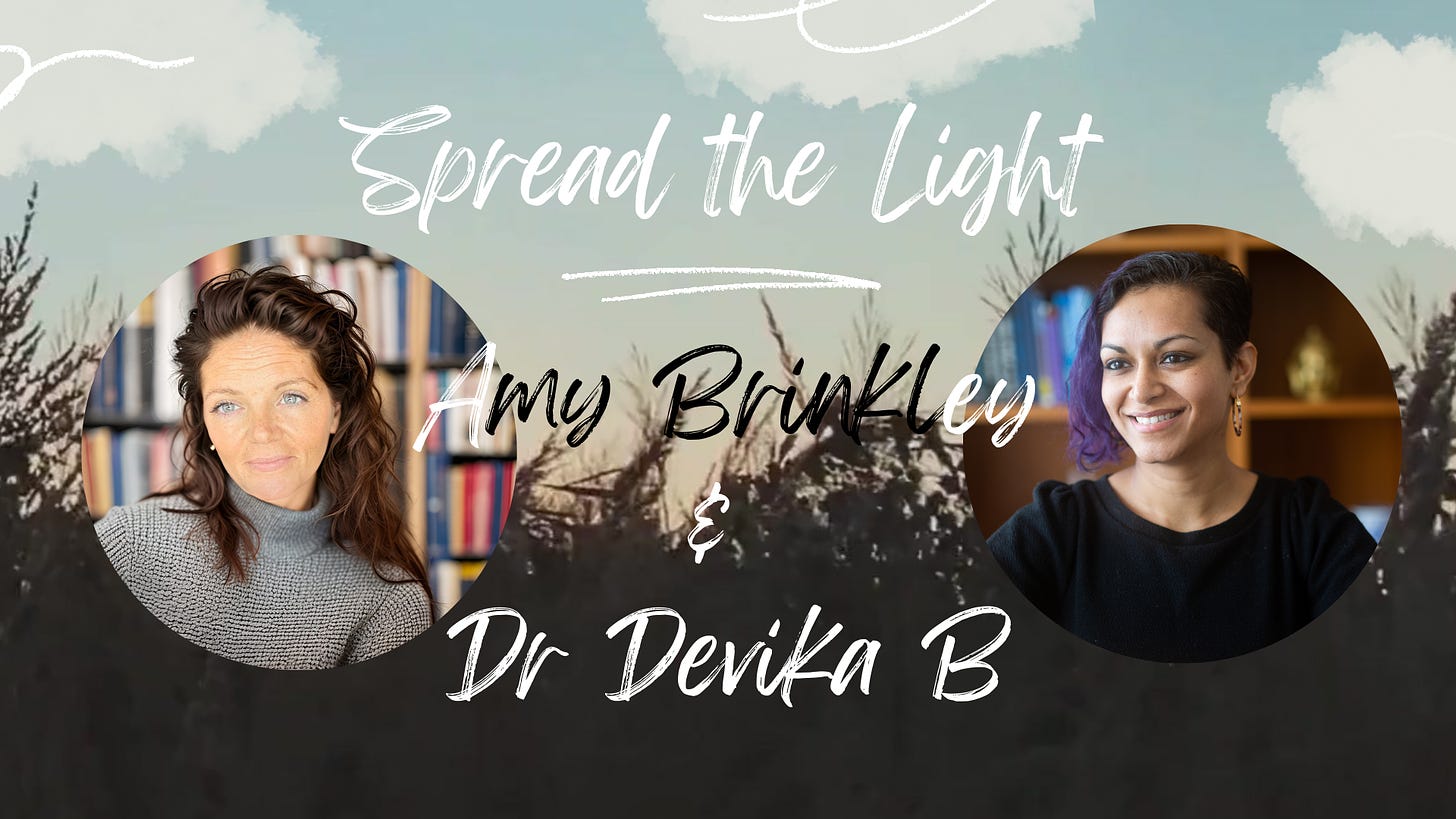


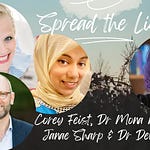
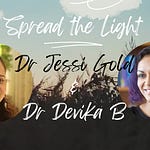

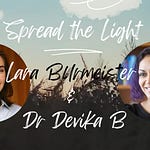

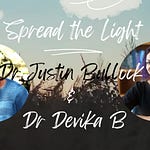
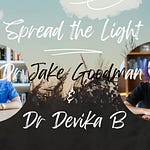
Spread the light: Amy Brinkley's journey with substance use disorder and mental illness